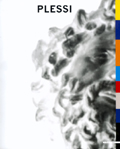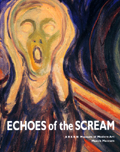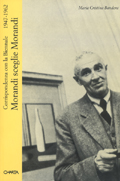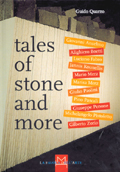|
|
|
Boris Mikhailov
This publication has been issued to accompany the solo show at the Hasselblad Center in Goteborg dedicated to the Ukrainian artist, Boris Mikhailov, winner of the Erna and Victor Hasselblad Foundation International Award in Photography for the year 2000. The volume is made up of a series of photographs which examine the town where he was born and its surrounding countryside, together with portraits of the people that live there. Mikhailov began to this photographic documentation during the Ukraine’s submission under the Soviet regime and continued through the post-Communist years. The book also contains the unpublished work Dance (1978) which is a serene reflection on the pastimes and habits of the community, for the most part middle-aged, who gather together to dance out in the open of this small ex-Soviet Union village. The publication finishes up with a critical essay by Boris Groys ( The Eroticism of Imperfection) and an interview with the artist by Jan Kaila.
Boris Mikhailov. The Hasselblad Award 2000, Scalo (Weinberstrasse 22a, Zürich, www.scalo.com), 2000, p. 87, 28 x 25 cm.
|

|
Plessi. Teatro elettronico della memoria
This is a catalogue published for the exhibition Shakespeariana, curated by Claudio Spadoni and hosted at the Loggetta Lombardesca in Ravenna. Fabrizio Plessi created a site-specific video installation work, entitled Teatro elettronico della memoria, which “shines with an inventive orchestration of materials, images, sounds, and spaces”, as described by Spadoni in his introductory text. The artist’s recent works reflect a concern with historical memory and the prophecy of mutation due to new technologies.
With a wealth of photographic material, the catalogue documents Fabio Plessi’s theater design projects, from the Icarus (1989) and Titanic (1995), directed by Frederic Flamand, up to the recent Sogno (2000) with choreography by Mauro Bigonzetti and original music by Elvis Costello.
Plessi. Teatro elettronico della memoria, Edizioni Gabriele Mazzotta (Foro Buonaparte 52, Milan), 2001, p. 23,5 x 27 cm.
|

|
Echoes of the Scream
This is a catalogue created for the group show hosted at the Arken Museum of Modern Art and later at the Munch Museum in Oslo. The works are by artists from the second half of the twentieth century, exhibited in the show and reproduces in this volume, which were inspired by or are somehow tied to the famous piece by Edvard Munch, The Scream (1893). This painting was literally the very portrait and visual translation of the predominant philosophical debate at the end of the nineteenth-century, when Friedrich Nietzsche wrote Thus Spake Zarathustra in 1872. The Scream also became the symbol of contemporary man’s existential condition, as re-elaborated in works such as Cry by Gilbert & George, On Giving Life by Ana Medieta, and Cleaning the Mirror #1 by Marina Abramovic.
Echoes of the Scream, Arken Museum of Modern Art (Skovvej 100, Ishøj, Denmark, www.arken.dk), 2001, p. 158, 22 x 27,5 cm.
|

|
Morandi picks Morandi
In this volume, Maria Cristina Bandera, History of Art professor at the Accademia di Belle Arti in Venice, gathers together the wealth of Giorgio Morandi’s unedited correspondence, which is fundamental for the appreciation and understanding of the Bolognese painter’s oeuvre. The most sensational example documented by Bandera is Morandi’s acceptance overseas with the invitation to have a solo show at the IV Biennale in Sao Paolo, Brazil, in 1957, where he was honored with the first prize for painting. The letters between Morandi and his collectors are particularly interesting, as well as those with the critics and historians of the period, which refute the image of him as a solitary painter, an image that he himself constructed and protected.
Maria Cristina Bandera, Morandi picks Morandi. Correspondence with the Biennale 1947-1962, Charta Press (Via della Moscova 27, Milan, www.chartaartbooks.it), 2001, p. 232, 15,5 x 23 cm.
|

|
Tales of stone and more
Guido Quarzo’s slim book, Tales of Stone and More (1997), together with That I Might be Born (2000), is the first English edition of these volumes for children from the collection “Art Fairy Tales,” edited by hopefulmonster. The purpose is to bring children into the world of contemporary art, by means of stories and the simplicity of language. In Quarzo’s book, the history of stone is told using art works by Giovanni Anselmo, Alighiero Boetti, Luciano Fabro, Jannis Kounellis, Mario Merz, Marisa Merz, Giulio Paolini, Pino Pascali, Giuseppe Penone, Michelangelo Pistoletto, and Gilberto Zorio. The series will continue in the fall of 2001, with the publication of Nico Orengo’s nursery rhyme about Panamarenko’s piece and Miguel Angel Mendo’s fable on the works of Nari Ward.
Guido Quarzo, Tales of stone and more, hopefulmonster press (Via Santa Chiara 30, Turin, www.hopefulmonster.net), 2001, p. 50, 14,5 x 20,5 cm.
|

|
|
|
|